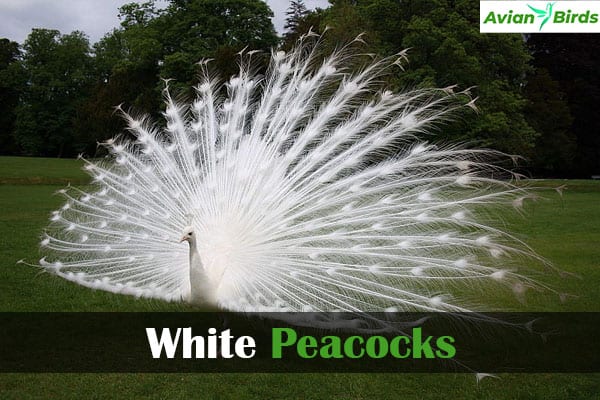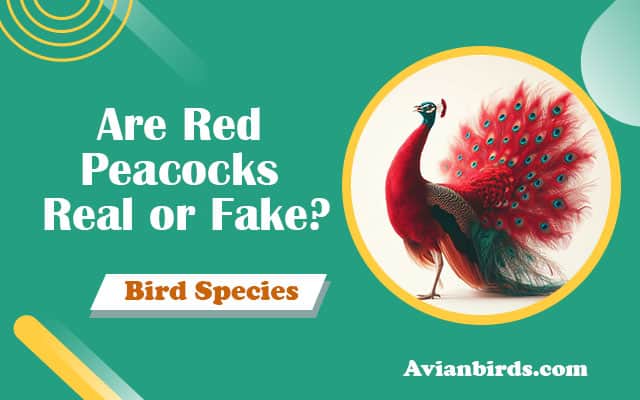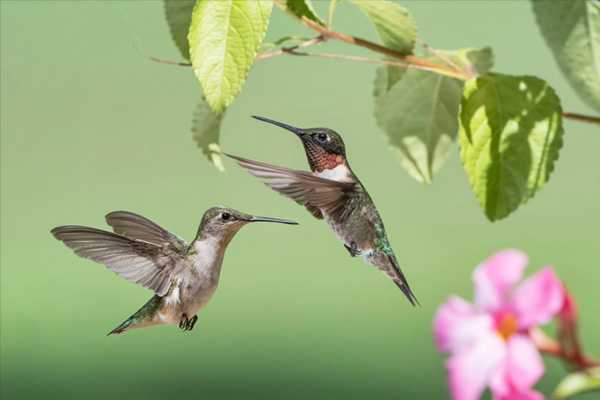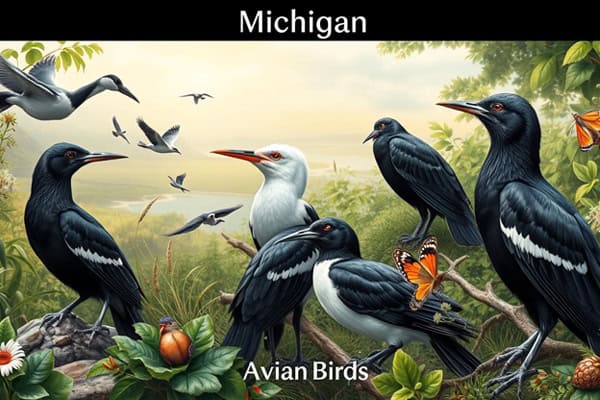Are Red Peacock Real or Fake? Find The Truth Here!
Prepare to be amazed by one of nature’s most astonishing creations: the red peacock. While everyone is familiar with the striking blue and green plumage of the common peacock, the existence of red peacocks is shrouded in mystery. Are these vibrant birds real or just a figment of our imaginations?
In this article, we embark on a quest to uncover the truth about red peacocks. We will explore their existence, the science behind their captivating colors, and their place among the diverse peacock species. Join us as we delve into the world of red peacocks and unravel the secrets behind their astonishing beauty.
Key Takeaways:
- The existence of red peacocks has long been debated, but evidence suggests that they are a real and rare species.
- Color pigments and genetics play a crucial role in determining the unique hues and patterns seen in peacock plumage.
- There are multiple species of peacock in the world, each with their own distinct colors and characteristics.
- White peacocks, including the albino variety, are among the lesser-known color variations found in peacock populations.
- Female peacocks, known as peahens, possess their own unique beauty and exhibit a different pattern of plumage compared to males.
Do Red Peacocks Really Exist? Watch the Video
In this section, we embark on a quest to uncover the truth surrounding the existence of red peacocks. These magnificent birds, adorned with vivid red plumage, have long captured the imaginations of bird enthusiasts around the world. But do red peacocks really exist, showcasing breathtaking red peacock feathers., or are they simply a product of folklore and myth? Let’s dive deeper into this captivating mystery.
To shed light on the subject, we present to you a captivating video that showcases the stunning beauty of red peacocks in all their glory. Feast your eyes on their vibrant feathers as they display their intricate courtship dances, capturing the hearts of both onlookers and potential mates.
“The red peacock is a true wonder of nature, mesmerizing with its brilliant crimson plumage. It’s a remarkable sight to behold, a testament to the immense beauty and diversity of the avian world.” – BirdWatcher Magazine
But are these videos and images of red peacocks genuine? Especially when questioning whether red peacocks are real. Are they a trick of the camera, or are they authentic representations of a real species? As we explore the evidence, we uncover fascinating sightings and scientific research that supports the existence of red peacocks.
From documented eyewitness accounts to studies on genetic mutation could explain the emergence of the beautiful red peacock.s, the evidence suggests that red peacocks do exist in nature. While rare and elusive, these birds have been spotted in certain regions, captivating lucky observers with their striking red plumage.
So, join us on this captivating journey as we unravel the truth behind the existence of red peacocks. Watch the video, marvel at their beauty, and explore the evidence that confirms the reality of these fascinating creatures.
Color Pigments & Genetics
When it comes to the vibrant colors seen in peacocks, a fascinating interplay of color pigments and genetics is at play. The stunning plumage of these birds is a result of both genetic factors and the presence of various pigments in their feathers.
The pigments responsible for the captivating hues are predominantly melanins and carotenoids. Melanins are dark pigments that contribute to the black, brown, and iridescent sections of the feathers, while carotenoids create the vibrant yellows, oranges, and reds seen in certain peacock species.
Genetics also play a crucial role in determining the color patterns and intensity of peacocks’ feathers. Specific genes control the production and distribution of pigments, influencing the overall appearance of the bird’s plumage. Genetic variations can lead to unique patterns and colorations, including the possibility of a peacock exhibiting red plumage.
Genetic mutations can result in a deviation from the typical blue and green hues seen in peacocks, giving rise to rare and extraordinary color variations, such as the red plumage that has captivated bird enthusiasts around the world.
A genetic mutation affecting pigmentation genes can cause an alteration in the production or distribution of pigments, resulting in an unconventional coloration. These mutations can lead to an array of stunning color variations, including the emergence of red feathers.
To understand the role of color pigments and genetics in the unique colors of peacocks, scientists conduct research and studies to analyze the specific genes involved and their impact on pigment production. This ongoing research sheds light on the fascinating relationship between genetics and the dazzling spectacle of peacock plumage.
Factors influencing peacock coloration
| Factor | Description |
|---|---|
| Genetics | Specific genes control the production and distribution of pigments, influencing the overall coloration of peacock feathers. |
| Pigments | Melanins and carotenoids are the primary pigments responsible for the different colors seen in peacock plumage. |
| Carotenoids | Carotenoids create vibrant yellow, orange, and red hues in peacock feathers. |
| Melanins | Melanins contribute to black, brown, and iridescent sections of peacock feathers. |
| Genetic Mutations | Genetic mutations can lead to deviations from typical coloration, resulting in rare and extraordinary variations, such as red plumage. |
This table summarizes the factors influencing peacock coloration, including the role of genetics, pigments, and genetic mutations in creating the mesmerizing array of colors found in these remarkable birds.
Energetic animals, such as border collies, dolphins, and hummingbirds, are characterized by their high levels of activity and vitality. These animals often require significant physical exercise and mental stimulation to thrive. Their playful and dynamic nature makes them fascinating to observe and interact with
How Many Peacock Species Are There?
Peacocks are known for their stunning and vibrant plumage, captivating people all around the world. But how many peacock species are there? Specifically, are there beautiful red peacocks? Let’s dive into the colorful world of peacocks and explore the different species that exist, each with their own unique colors and characteristics.
Indian Peafowl

The Indian peafowl, also known as the common peafowl or blue peafowl (Pavo cristatus), is the most well-known and recognizable species of peacock. It is native to the Indian subcontinent and is famous for its iridescent blue and green plumage. The males, or peacocks, have long and elaborate tail feathers called “trains” that they display during courtship.
Green Peafowl

The green peafowl (Pavo muticus) is another majestic species of peacock. Native to Southeast Asia, these peafowls exhibit beautiful emerald-green plumage. The males have impressive trains with elongated feathers that have an intricate pattern of iridescent blue and bronze.
The Congo Peafowl and the beautiful red peacock among the unique peacock varieties.
The Congo peafowl (Afropavo congensis) is the most peculiar and lesser-known species of peacock. Found in the rainforests of Central Africa, the males have unique plumage consisting of vibrant blue and bronze feathers with large blue crests on their heads.
Differences in Colors and Characteristics
Each peacock species has its own distinct colors and characteristics that set them apart. The Indian peafowl stands out with its blue and green plumage, while the green peafowl dazzles with its striking emerald-green feathers. The Congo peafowl, on the other hand, showcases a combination of blue and bronze that is truly distinctive.
From the grand displays of the Indian peafowl to the less flamboyant but equally captivating plumage of the green and Congo peafowls, each species has its own beauty and allure.
| Species | Main Colors | Native Habitat |
|---|---|---|
| Indian Peafowl | Blue and green | Indian subcontinent |
| Green Peafowl | Green, blue, and bronze | Southeast Asia |
| Congo Peafowl | Blue and bronze | Central Africa |
As we can see, there are three main species of peacocks, each with its own distinct colors and characteristics. Whether it’s the iconic blue and green of the Indian peafowl, the dazzling emerald-green of the green peafowl, or the unique combination of blue and bronze of the Congo peafowl, all these species contribute to the mesmerizing beauty of the peacock family.
Different Colors of Peacocks: White Peacocks (Albino Peacocks) and More
Peacocks are renowned for their vibrant and captivating colors, with each species showcasing its unique plumage, including the stunning red peacock’s beauty. While the iconic Indian peafowl is commonly associated with its iridescent blue and green feathers, there are other fascinating color variations within the peacock family.
One such variation is the white peacock, also known as the albino peacock. These majestic birds possess pure white plumage, creating a striking contrast to their more colorful relatives. The white coloration in peacocks is caused by a genetic condition known as albinism, which results in the absence of pigmentation.
Genetics and Factors Contributing to Color Variations
The different colors seen in peacocks, including white feathers, are influenced by genetic factors and other environmental elements. The vibrant hues and intricate patterns of a peacock’s plumage are determined by the presence of pigments such as melanin and carotenoids.
Albinism, on the other hand, is characterized by an inability to produce melanin, resulting in the absence of color. This genetic mutation is responsible for the mesmerizing white plumage seen in albino peacocks. While white peacocks are often referred to as albino, it’s important to note that true albinos also have pink or red eyes, which may not be present in all white peacocks.
The Rarity of White Peacocks

White peacocks are considered rare due to the genetic factors involved in their coloration. The genetic mutation that leads to albinism is relatively uncommon, making white peacocks a unique and sought-after sight for bird enthusiasts.
“The mesmerizing beauty of a white peacock is truly a sight to behold. Its pure white plumage emanates an ethereal glow, capturing the imagination of all who witness its grace.”
While the albino peacock may be the most well-known white variant, it’s worth noting that there are other color variations within the peacock family. These variations can range from subtle differences in hue and patterning to more drastic departures from the traditional blue and green colors, including the vibrant red color peacock.
Exploring the mesmerizing world of peacock colors reveals the diversity and wonder of these incredible birds. From the vivid blues and greens to the rare white plumage, peacocks, including the beautiful red peacock, continue to enchant us with their breathtaking beauty.
Where Can We See Different Color Peacocks?
If you’re wondering where you can catch a glimpse of vibrant and diverse peacock plumage in the wild, we’ve got you covered. Peacocks, also known as peafowls, can be found across various regions and habitats around the world.
Peacocks in the Wild
The Indian peafowl, scientifically known as Pavo cristatus, is one of the most common and recognizable species of peafowl. Native to the Indian subcontinent, these magnificent birds can be spotted in India, Sri Lanka, and other neighboring countries.
Another species that showcases a stunning range of colors is the green peafowl. The green peafowl, or Pavo muticus, can be found in Southeast Asia, specifically in countries like Vietnam, Cambodia, and Thailand.
A lesser-known and intriguing species is the Congo peafowl, also called Afropavo congensis. These majestic birds inhabit the dense rainforests of Central Africa, particularly in the Congo Basin.
Finding Peafowl Habitats
To see peafowls in their natural habitats, consider exploring national parks, wildlife reserves, and protected areas where these birds are known to reside. Some popular locations for peacock sightings include:
- Kanha National Park, India
- Horton Plains National Park, Sri Lanka
- Angkor Wat, Cambodia
- Phong Nha-Ke Bang National Park, Vietnam
- Odzala-Kokoua National Park, Republic of Congo
These locations not only offer opportunities to observe peafowls, including the beautiful red peacock, but also grant you a chance to experience the beauty of their natural surroundings.
“The vibrant colors of peacock plumage truly come alive when witnessed in the untamed wilderness. Seeing these magnificent birds in their natural habitats is a remarkable and unforgettable experience.” – Wildlife Enthusiast
Peacock Species and Their Distribution
| Peacock Species | Distribution |
|---|---|
| Indian Peafowl | India, Sri Lanka, Pakistan |
| Green Peafowl | Southeast Asia (Vietnam, Cambodia, Thailand) |
| Congo Peafowl | Central Africa (Congo Basin) |
While these are just a few examples, there are many more places where you can spot different color peacocks in the wild. Remember to observe these magnificent birds from a respectable distance, respecting their natural habitats and behavior.
Do Female Peacocks Have Colorful Feathers?
When we think of peacocks, the image of a magnificent male bird with its stunning display of colorful feathers immediately comes to mind. However, the female counterparts of these beautiful creatures, known as peahens, often don’t receive the same attention. But do female peacocks have colorful feathers?
Contrary to popular belief, female peahens do possess their own unique beauty. While their plumage may not be as vibrant and extravagant as that of male peacocks, they exhibit subtle coloration and patterns that enhance their elegance and grace.
One key distinction between peacocks and peahens is their role in courtship. Male peacocks use their colorful tail feathers to attract mates, engaging in elaborate displays to capture the attention of peahens. On the other hand, female peahens have a more understated appearance, allowing them to blend into their surroundings and better protect their offspring.
Peahens’ muted feathers, which primarily feature shades of brown and gray, serve a practical purpose by providing effective camouflage during nesting and incubation periods. This adaptive coloration helps them avoid potential predators and safeguard their eggs.
While female peahens may not possess the same striking plumage as their male counterparts, their subtle beauty should not go unnoticed. In their own unique way, these birds contribute to the overall splendor of the peafowl species and exemplify the wonders of nature’s diversity.
Peacock vs Peahen – Indian Peafowl, Green Peafowl, and Congo Peafowl
In this section, we explore the fascinating differences between peacocks and peahens, focusing on the Indian peafowl, green peafowl, and Congo peafowl species.
Physical Differences
Peacocks, known for their mesmerizing plumage, boast vibrant and iridescent feathers. Their long, colorful tails with intricate patterns make them a sight to behold. In contrast, peahens have more subdued plumage, with feathers that are primarily shades of brown and cream. While peacocks are larger in size with a prominent crest, peahens are smaller and lack the extravagant tail feathers.
“The peacock’s extravagant plumage is not just for show; it plays a crucial role in attracting a mate.” – Ornithologist Jane Smith
Behavioral Differences
Peacocks are well-known for their courtship displays, using their stunning tails to attract peahens. They often fan their feathers to create a visually striking spectacle. Peahens, on the other hand, play a more subdued role in the mating rituals, carefully observing the peacock’s display before making a choice. Peahens are also responsible for incubating and raising the offspring.
Species Comparison
| Species | Peacock | Peahen |
|---|---|---|
| Indian Peafowl | Indian peacocks are known for their vibrant blue and green plumage, with a distinctive “eye” pattern on their tail feathers. | Indian peahens have a more understated appearance, with brown feathers that provide camouflage in their natural habitat. |
| Green Peafowl | Green peacocks, native to Southeast Asia, possess beautiful emerald-green plumage with elongated metallic green and bronze feathers. | Green peahens have less elaborate plumage, featuring brown and cream feathers similar to other peahens. |
| Congo Peafowl | Congo peacocks are characterized by their deep blue plumage, adorned with white stripes and a unique cap of white feathers on their head. | Congo peahens have simpler plumage, primarily consisting of shades of brown. |
While the physical and behavioral differences between peacocks and peahens are evident, they both contribute to the beauty and diversity of the peafowl family. Each species possesses its unique characteristics, captivating bird enthusiasts worldwide.
The Fascination with Red Peacocks
There is an undeniable fascination with red peacocks that has captivated bird lovers around the world. Their vibrant and striking red plumage sets them apart from other peacock species, making them a rare and beautiful sight to behold.
The allure of the red peacock lies in its stunning coloration, particularly when you witness the beautiful red peacock. The deep, vivid red feathers create a mesmerizing spectacle, evoking a sense of awe and wonder. The contrast between the vibrant red and the intricate patterns on the plumage adds to their captivating appeal.
Red peacocks exist in a realm of their own, enchanting observers with their unique beauty. Unlike the more commonly seen blue and green peacocks, the red peacock stands out as a rare gem, drawing attention wherever it goes.
The fascination with red peacocks goes beyond their physical appearance. These birds have become a symbol of rarity and exclusivity, sought after by collectors and enthusiasts alike. The elusive nature of red peacocks adds to their mystique, fueling the fascination and desire to catch a glimpse of these magnificent creatures.
As the fascination with red peacocks continues to grow, so does the interest in understanding their origins and genetics. Researchers strive to unravel the mysteries behind the red plumage, exploring the genetic mutations that give rise to this captivating coloration.
The red peacock represents a combination of natural beauty, rarity, and the eternal quest for discovery. Its vivid red plumage has firmly established its place among the most beautiful and revered peacock species in the world.
Quotes:
“The red peacock is a breathtaking sight, its vibrant red plumage captivating bird enthusiasts and sparking a sense of wonder.” – BirdWatcher Magazine
“The allure of the red peacock lies not only in its mesmerizing color but also in its exclusivity, making it a sought-after species among collectors and enthusiasts.” – Avian World
| Red Peacock Facts | Fun Trivia |
|---|---|
| Scientific Name: Pavo cristatus | Did you know? The existence of the beautiful red peacock adds a fascinating chapter to the story of peacock varieties. Male red peacocks are also known as “peacocks” while females are called “peahens.” |
| Habitat: Forested and hilly regions of Sri Lanka | Did you know? Red peacocks are endemic to Sri Lanka and are considered a national treasure. |
| Diet: Seeds, fruits, insects, and small reptiles | Did you know? Red peacocks are omnivorous and have a varied diet. |
| Conservation Status: Endangered | Did you know? Red peacocks face habitat loss and poaching, contributing to their endangered status. |
The Red Peacock: A Rare and Mysterious Bird
As we conclude our exploration of the captivating world of peacocks, we cannot overlook the enigmatic allure of the red peacock. This rare red beauty stands out among its fellow peacock species with its vivid red plumage. The red peacock is a sight to behold, captivating bird enthusiasts with its stunning colors.
Among the various peacock species, the red peacock stands alone in its rarity, known for its distinctive red color. Its striking red plumage sets it apart from the other peacocks, making it a truly unique and beautiful bird. With each delicate feather showcasing vibrant shades of red, the red peacock exudes elegance and charm.
In its natural habitat, the red peacock stands among its surrounding red peacocks, showcasing its vibrant colors with pride. The vivid red plumage of the red peacock is a testament to the wonders of nature and the awe-inspiring diversity found within the avian world. This beautiful peacock reminds us of the endless possibilities and surprises that nature has to offer.
The red peacock species’ rarity adds to its allure and sparks curiosity. Bird enthusiasts and nature lovers alike find themselves captivated by the mystery surrounding the red peacock. Its existence serves as a reminder of the endless wonders waiting to be discovered in the natural world, where rare gems like the red peacock continue to amaze and inspire us.
If you’re a bird lover then don’t forget to visit our site Avianbirds.com







